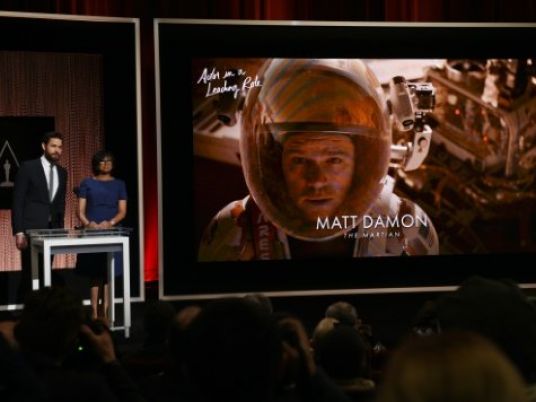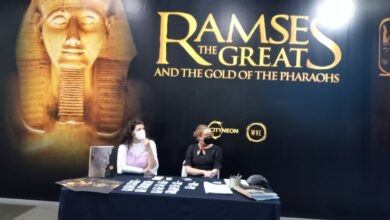
At the entrance of Dolby headquarters in San Francisco, a ribbon of television screens plays synchronized videos that change in time to sound effects.
The display mirrors Dolby's recent efforts to move beyond sound enhancement to improve what people see when they watch films.
Several of the movies up for Oscars on Sunday in Los Angeles were made with Dolby Vision, which has become an industry standard for image quality in movies.
Best picture nominees "The Martian" and "The Revenant," as well as Pixar's animated film "Inside Out" used the technology.
"We're predominately known and associated with audio, but we spent the last decade working on imaging," Dolby director of content and creative relations Stuart Bowling told AFP.
Since the company launched its Dolby Vision in 2014, an array of television makers and major Hollywood studios have adopted the technology, which produces wider ranges of color and contrast.
Even though the number of pixels that can be captured in films has exploded, "we found something was missing everywhere: contrast," Bowling said.
"Adding more contrast makes a significant impact on the image; it looks sharper, more vibrant, more color-saturated and then almost 3D," he added.
The difference becomes clear watching two high-definition televisions side-by-side.
With Dolby Vision, details jump out in a "Lego" movie scene showing car headlights, or during an explosion in "Man of Steel," while they are crushed or blurred in the standard version of the films.
Industry standard
Dolby Laboratories was founded half a century ago by its namesake, Ray Dolby who set out to develop technology for fuller, cleaner, crisper sound.
One of the company's early creations was noise reduction technology that made its cinema debut in the 1971 film "A Clockwork Orange."
Dolby went on to become a de facto standard for audio quality in films, music, theaters and consumer electronics.
Now with its new Dolby Vision technology, it is setting the bar for image quality as well.
To make sure images come out well in theaters, Dolby uses a special projector with lasers rather than traditional Xenon light bulbs to increase brightness.
This results in intense, nearly fluorescent reds, blues and greens in such films as "Inside Out."
Dolby Vision imbues movies with "much brighter brights and much darker darks," according to chief marketing officer Bob Borchers.
"It allows you to do things impossible before," such as deep black in space scenes from the latest "Star Wars" film, Borchers said.
Dolby Cinema works with theaters on everything from acoustics and interior design to Vision projection gear. It also sets up its Atmos speaker systems which assign sounds to precise locations in a room, creating a real-life effect.
Theater screens in Europe and the United States have been equipped with Dolby Cinema, and the technology is heading for theaters in China through a partnership with the country's Wanda Cinema Line.
Dolby has even begun to offer its services for corporate meetings with a product called Voice, which builds upon technology that it designed for the movies.
Voice creates the effect of different people on a call speaking from different places in a room and eliminates background noises.
Dolby revenue was essentially flat at $967 million during its last fiscal year, which ended in September, but the company expects its conference and cinema businesses to add $20 million to its revenue this fiscal year.
Barrington Research analyst James Goss referred to Vision, Atmos and Voice as "potential stepping stones to returning to meaningful top-line growth."




